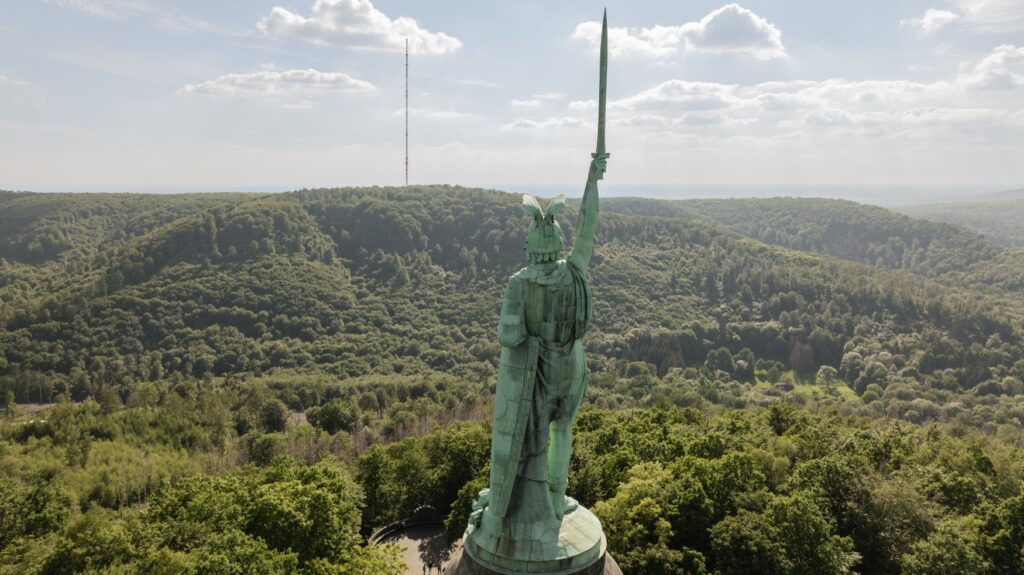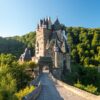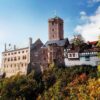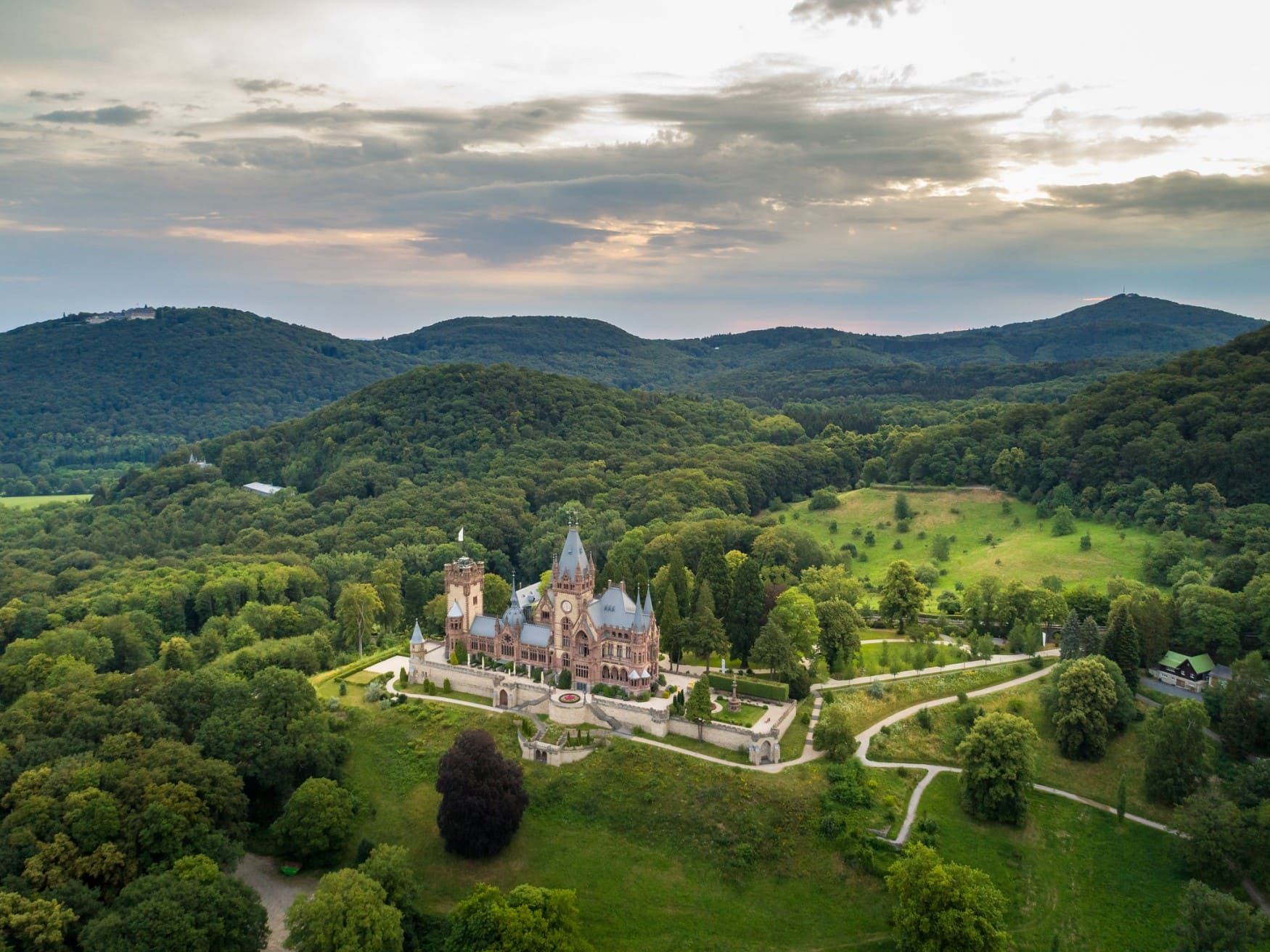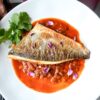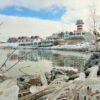Ah, NRW. We might not be the most beautiful federal state as we don’t have Neuschwanstein, but instead, a lot of post-war architectural sins. Nevertheless, there is plenty to see between the Rhine, Ruhr, and Ems rivers. Six Unesco World Heritage Sites are located in this region, and all of them are worth exploring. Here are our 8 picks for must see attractions in North Rhine-Westphalia.
Cologne Cathedral | Cologne
Arguably, no building in North Rhine-Westphalia is as famous as the Cologne Cathedral. This Gothic cathedral is not only one of the oldest buildings in the entire state but, at over 157 meters, is also the third-highest church in the world. With six million visitors annually, the impressive landmark welcomes you as you enter the main train station. Despite ongoing restoration work on various sections adorned with impressive sculptures, a visit is still worthwhile.
After climbing the South Tower (533 steps), you’ll have the best view of Cologne and its surroundings – on a clear day, even as far as the Siebengebirge. A favorite spot in the cathedral is the Gerhard Richter window in the southern transept, especially around noon when the light is at its best.
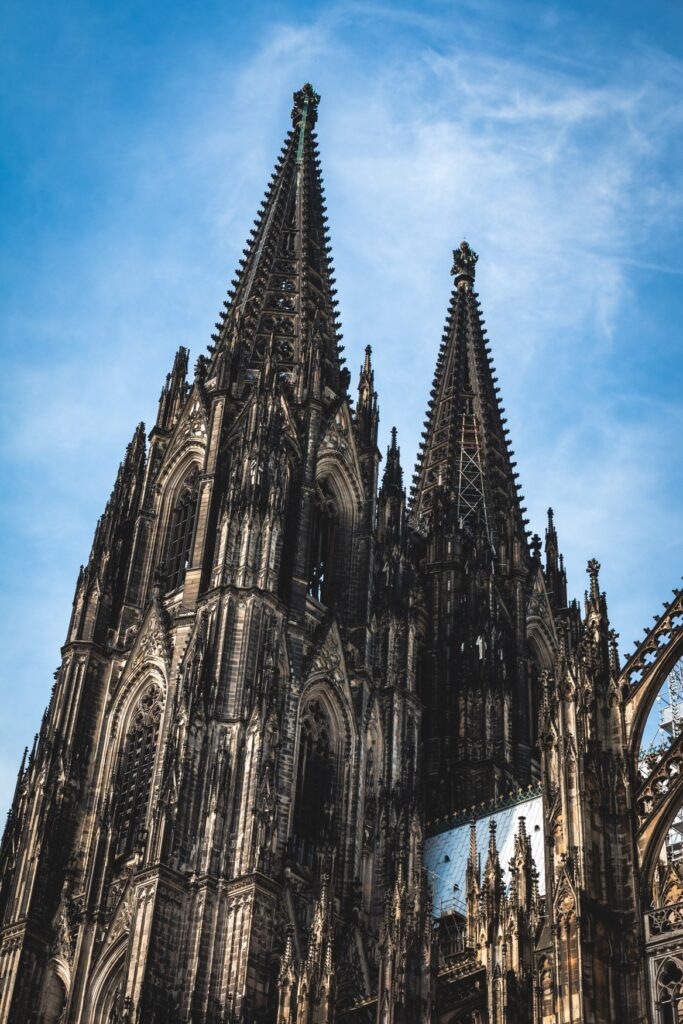
Drachenburg Castle | Königswinter
Perched high above Königswinter with a fantastic view of the Rhine, Drachenburg Castle looks like it belongs in Disneyland. Built in the late 19th century by Bonn merchant Stephan von Sarter, the romantic mansion resembles a late medieval retreat. Today, the castle is a protected monument and a popular year-round destination.
Guided tours provide insights into the castle’s fascinating history, and the castle park offers a picturesque setting for Instagram-worthy photos. Special events, such as a fairytale-like Christmas market, also attracts visitors. You can reach the top of the hill with a historic cogwheel railway, which continues to the Drachenfels viewing platform.

Zollverein Coal Mine Industrial Complex | Essen
In the past, the Ruhr region was Germany’s industrial engine, driven by the coal extracted from the earth in dozens of mines. Today, numerous winding towers and slag heaps along the Ruhr River remind us of the region’s rich history and serve as characteristic attractions in North Rhine-Westphalia. One of the most striking is the bright red winding tower at Shaft XII in the Zollverein Coal Mine in Essen. Now housing the Ruhr Museum, the site provides comprehensive information about the Ruhr region, its nature, and history. Special tours trace the coal’s journey from extraction to transport, with options tailored for children.
The Red Dot Design Museum, located on the premises, showcases not only award-winning designs but over 2,000 contemporary design objects. The former factory swimming pool in the old coking plant, a one of a kind worldwide, adds a touch of elegance. In winter, a 150-meter-long ice rink is installed on the premises, offering a full day of recreational activities.
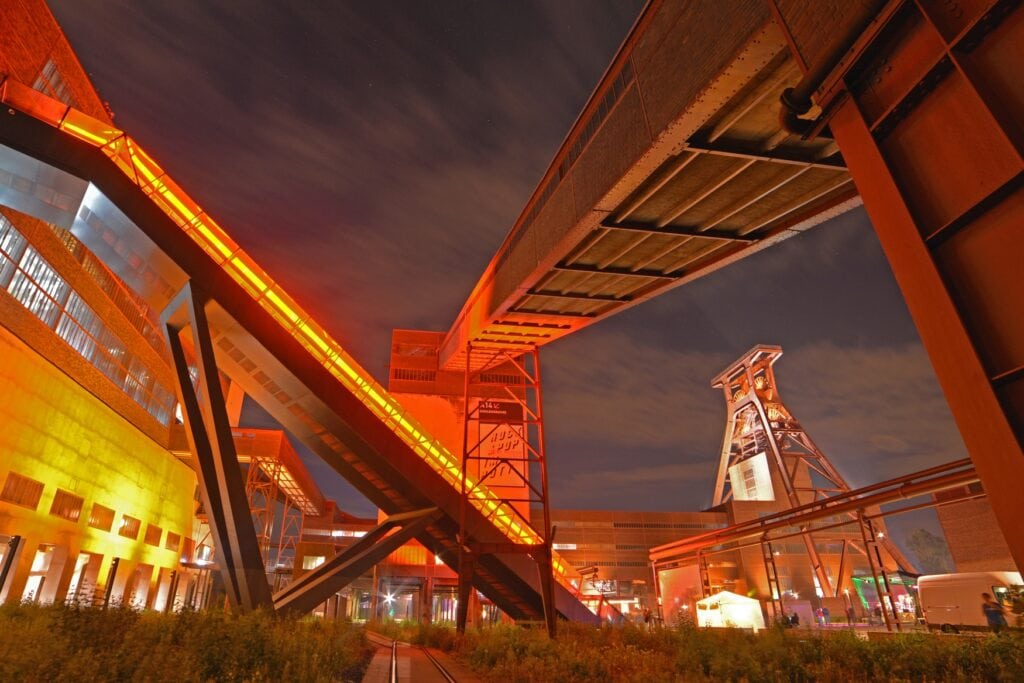
Externsteine | Horn-Bad Meinberg
The imposing Externsteine rocks in Lipperland exude mystique. The distinctive, freestanding rock formation appears as if giants rammed it into the landscape in ancient times. In reality, these colossi, reaching up to 47 meters, are around 70 million years old, stretching for several hundred meters. No wonder the rocks have fueled people’s imagination for centuries. Probably the oldest of the attractions in North Rhine-Westphalia. The Externsteine attracts nature lovers and mystics alike and serves as a retreat for stag beetles and even owls. While some selected rocks can be climbed, the general rule is, as always, “Please respect nature!”
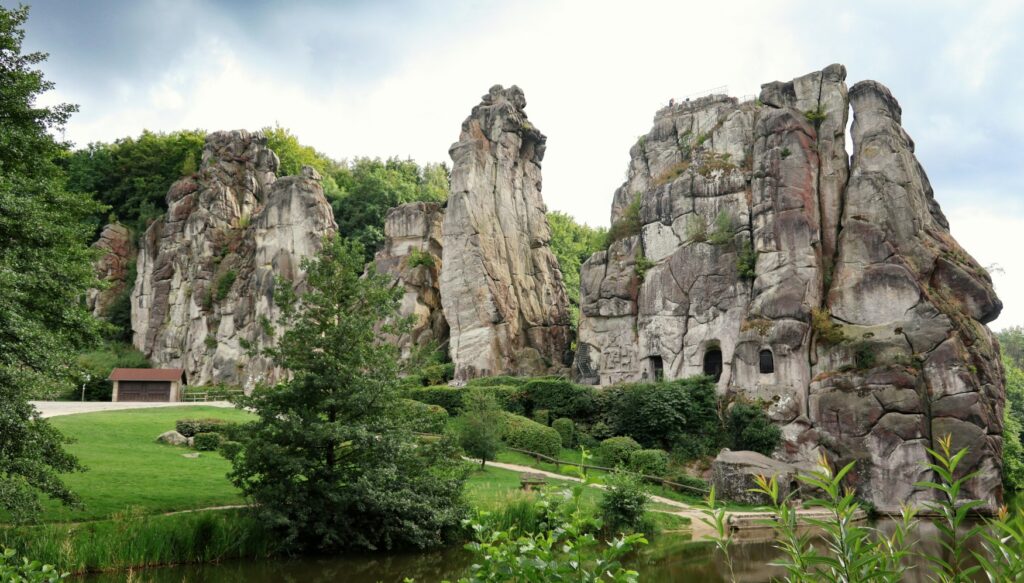
Prinzipalmarkt | Münster
Shop like you’re in the Middle Ages! At least visually, you can do this on Prinzipalmarkt in Münster. This picturesque street in the city center is characterized by the unmistakable facades of old gabled houses. Interrupted only by the passage to Michaelisplatz with the Münster Cathedral, this row of facades is always bustling, whether in summer, winter, weekdays, or weekends. Window shopping along the stores housed in the historic buildings is a favorite activity of Münster residents. This tradition dates back to the late Middle Ages when merchants of the Hanseatic city were located here.
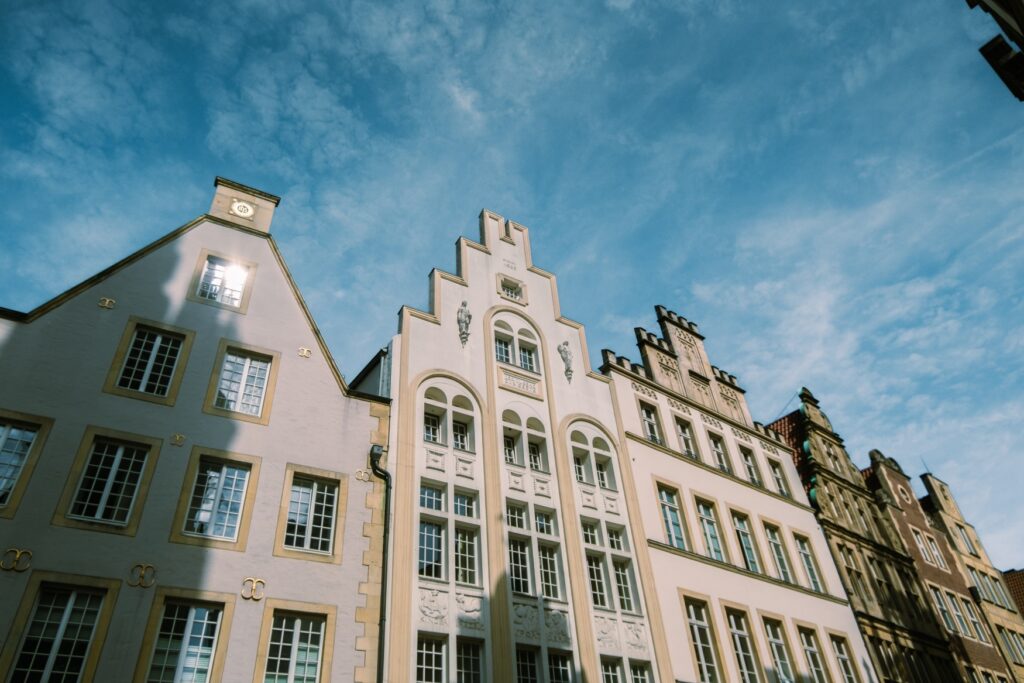
Augustusburg and Falkenlust Palaces | Brühl
In the tranquil town of Brühl, located about halfway between Cologne and Bonn, lies a true Baroque gem: Augustusburg and Falkenlust Palaces. These two Rococo buildings are among the first Unesco World Heritage Sites in Germany, awarded in 1984. Nowadays there are six Heritage Sites among the attractions in North Rhine-Westphalia. Augustusburg Palace was built from 1725 by the then Archbishop of Cologne and Elector Clemens August I of Bavaria as a summer residence. A few years later, Falkenlust Palace was added as a hunting lodge. The magnificent palace garden connects the two buildings and is still an excellent place for a Sunday stroll. You can enter the palaces (Augustusburg by guided tour only) and immerse yourself in the opulent past of the Rhine nobility.
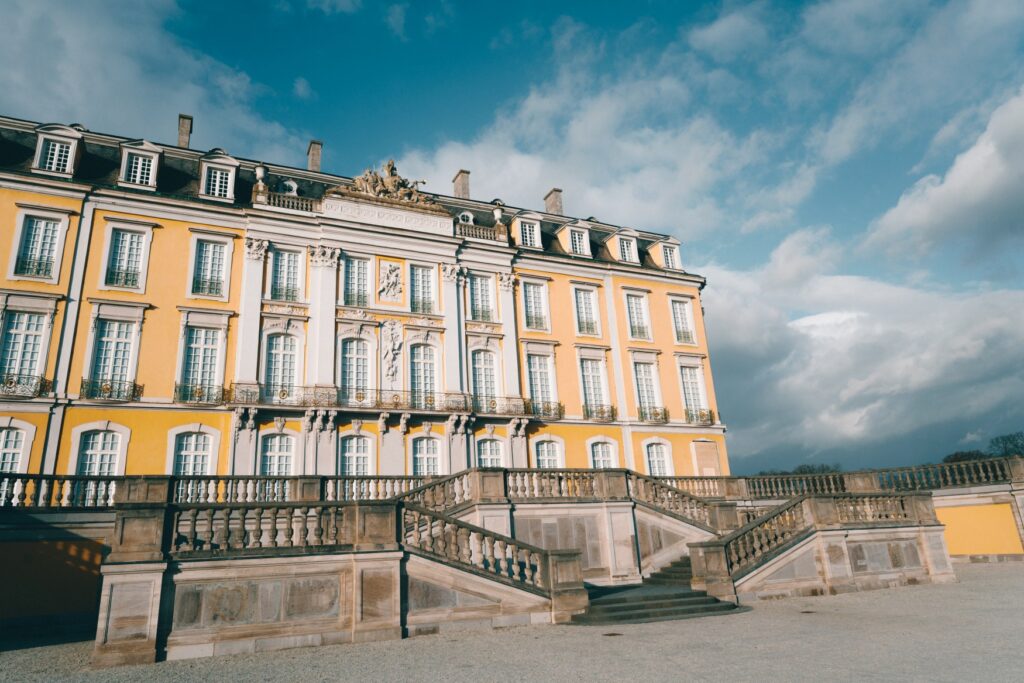
Gehry Buildings in the Media Harbor | Düsseldorf
World-class architecture in the heart of North Rhine-Westphalia? You’ll find it in the Media Harbor in the state capital Düsseldorf. There stand the Gehry Buildings (officially known as Neuer Zollhof), which, at first glance, appear as if architect Frank Gehry lost his ruler while designing them. The walls of the building ensemble reach out in all directions, except in the usual 90-degree angle directly upward. The contrasting building materials – plaster, brick, and stainless steel – add to the effect. Inaugurated in October 1999, these three buildings have been causing amazement amongst Düsseldorf residents as well as tourists ever since. While in the area, you can also visit the state parliament or enjoy some of the finest bars in the Media Harbor.
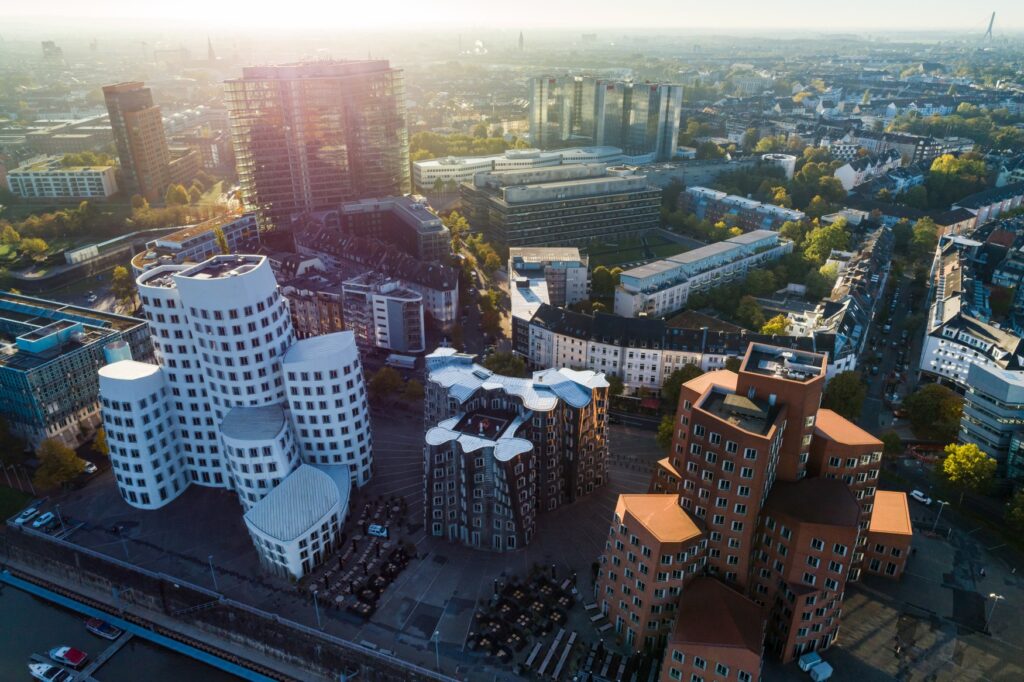
Hermannsdenkmal | Detmold
The tallest statue in Germany, with an impressive total height of 53.46 meters, stands in the middle of the Teutoburg Forest: the Hermannsdenkmal. Recently, the old Hermann gained attention through the Netflix production “Barbarians” (regarding its historical accuracy, let’s leave that discussion aside for now). In Roman times, he was named Arminius, and his “German” alter ego, “Hermann the Cheruscan,” is more of a creation of the 19th-century national spirit.
Whether the Battle of the Teutoburg Forest in 9 AD really took place there is a topic of academic debate. What is certain is that the Hermannsdenkmal has lost none of its grandeur, especially in the summer and autumn months, making it an excellent destination for a hearty hike. Wearing Roman sandals during the hike is entirely up to you.
